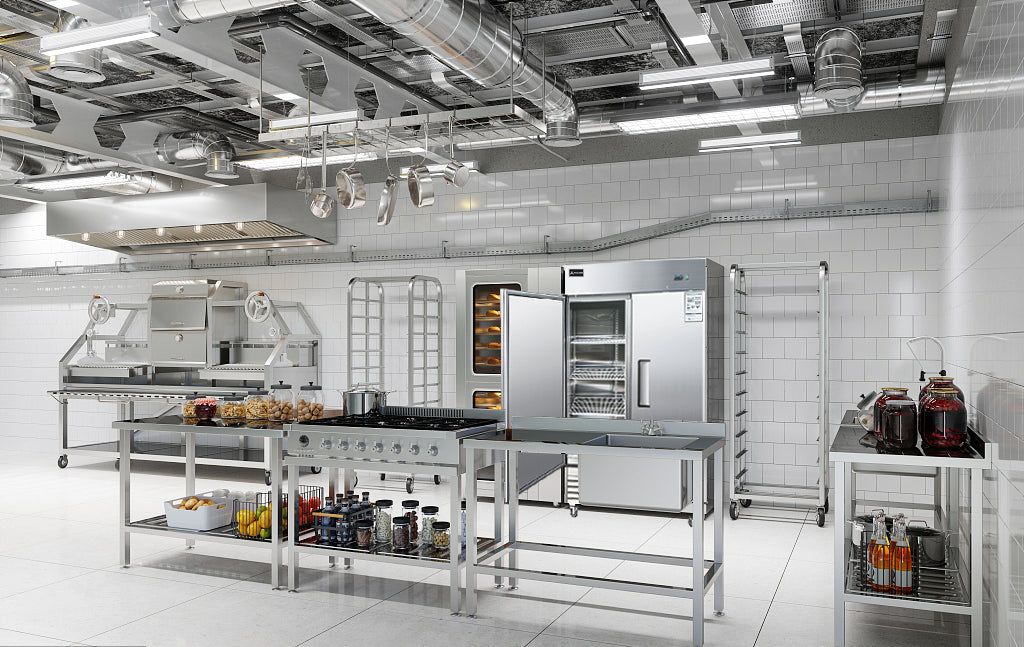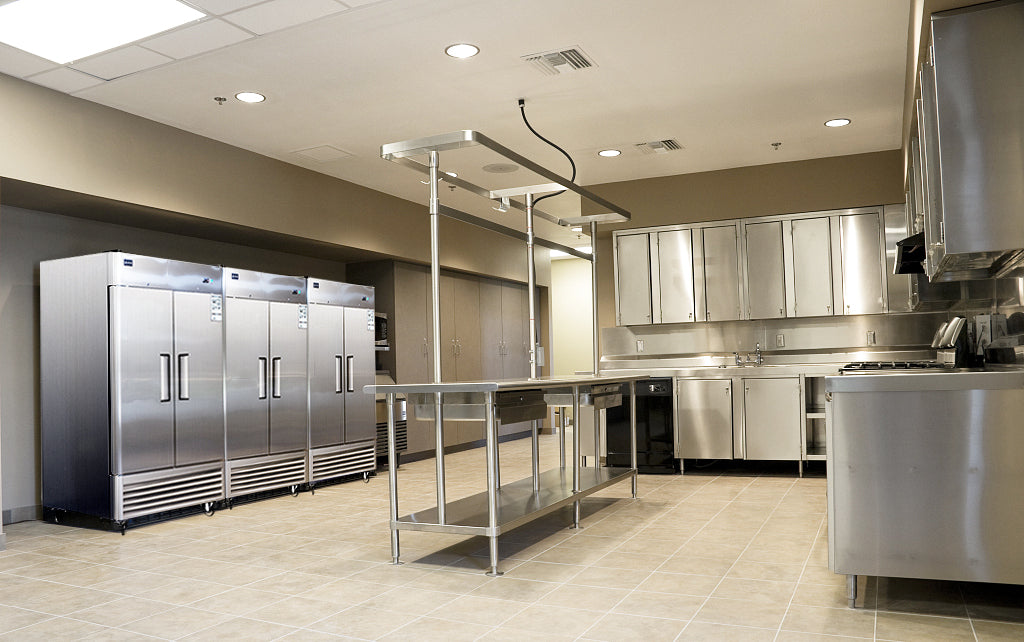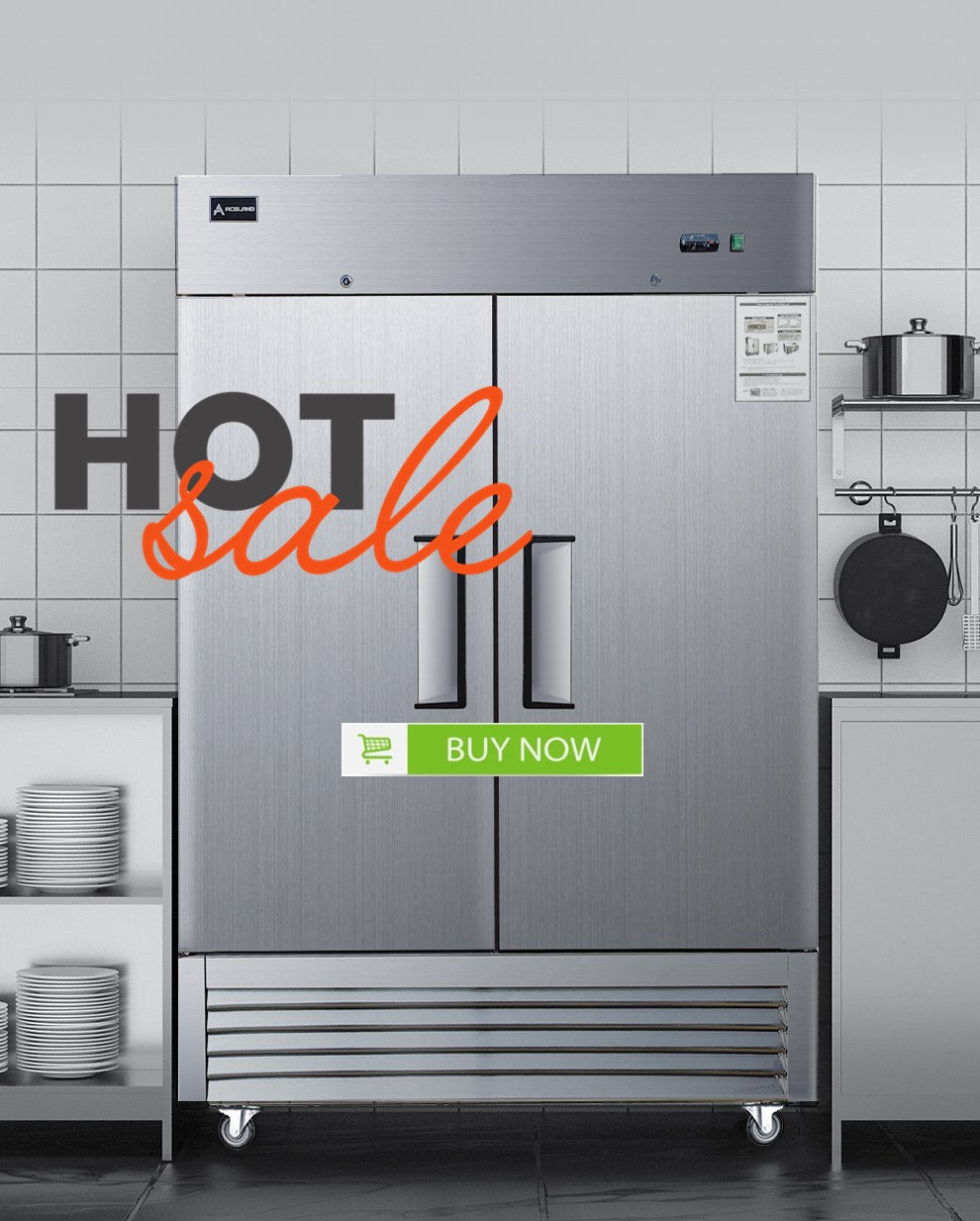Commercial Refrigerator Sizes
Commercial Refrigerator Sizes
When it comes to commercial refrigeration, size is a key consideration. The right dimensions can significantly impact your business's efficiency, storage capacity, and overall operations. Explore the various sizes and factors to consider when selecting a commercial refrigerator for your establishment.
Reach-In Refrigerators
- Dimensions: Available in various sizes, with common dimensions ranging from 30 to 48 inches wide, 24 to 36 inches deep, and 60 to 84 inches tall.
- Ideal for: Restaurants, grocery stores, and other businesses needing a versatile storage solution.
- Features: Adjustable shelves, door alarms, digital temperature controls, often include lockable doors, generally between one and three sections.
Glass Door Merchandiser Refrigerators
- Dimensions: Similar to reach-in refrigerators but with glass doors for product visibility.
- Ideal for: Retail stores, convenience stores, and delis where product display is important.
- Features: Glass doors, LED lighting, adjustable shelves, often include lockable doors.
Worktop Refrigerators, Prep Tables & Chef Bases
- Dimensions: Typically measure between 36 and 48 inches wide, 24 to 36 inches deep, and 32 to 36 inches tall.
- Ideal for: Food preparation areas or areas where items like custom sandwiches or pizzas are assembled.
- Features: Adjustable shelves, refrigerated drawers or compartments, often include casters for mobility.
Open-Air Fridges
- Dimensions: Available in various sizes to fit different a diverse range of spaces, typically ranging from 2 to 8 feet in width and 3 to 4 feet in depth.
- Ideal for: Chilled beverages and grab-and-go meals in supermarkets, convenience stores, and food markets.
- Features: Open design, LED lighting, adjustable shelves, often include temperature control.
Undercounter Refrigerators
- Dimensions: Typically measure between 24 and 30 inches wide, 24 inches deep, and 32 to 36 inches tall.
- Ideal for: Compact kitchens, undercounter spaces, and storing beverages, snacks, or ingredients needed close at hand.
- Features: Compact design, adjustable shelves, sometimes include small freezer compartments.
Display Cases
- Dimensions: Sizes vary depending on the style and purpose but can range from 3 to 6 feet wide and 2 to 4 feet deep.
- Ideal for: Convenience stores, delis, and bakeries showcasing food and beverages in a visually appealing manner.
- Features: Glass doors, LED lighting, adjustable shelves, often include temperature control.
Beverage Coolers
- Dimensions: Available in various sizes but often measure between 30 to 48 inches wide and 24 to 36 inches deep.
- Ideal for: Convenience stores, bars, and restaurants needing space to both store and display beverages.
- Features: Glass doors, adjustable shelves, often include temperature control and self-closing doors.
Commercial Refrigeration Size Chart
| Product Type | Common Width | Common Depth | Common Height |
|---|---|---|---|
| Reach-In Refrigerators | 30-48 in. (2.5-4 ft.) | 24-36 in. (2-3 ft.) | 60-84 in. (5-7 ft.) |
| Glass Door Merchandiser Refrigerators | 30-48 in. (2.5-4 ft.) | 24-36 in. (2-3 ft.) | 60-84 in. (5-7 ft.) |
| Walk-In Refrigerators | 96+ in. (8+ ft.) | 96+ in. (8+ ft.) | 96-144 in. (8-12 ft.) |
| Worktop Refrigerators, Prep Tables, & Chef Bases | 36-48 in. (3-4 ft.) | 24-36 in. (2-3 ft.) | 32-36 in. (2.67-3 ft.) |
| Open-Air Fridges | 48-96 in. (4-8 ft.) | 36-48 in. (3-4 ft.) | 60-84 in. (5-7 ft.) |
| Undercounter Refrigerators | 24-30 in. (2-2.5 ft.) | 24 in. (2 ft.) | 32-36 in. (2.67-3 ft.) |
| Display Cases | 36-72 in. (3-6 ft.) | 24-48 in. (2-4 ft.) | Wide Variety |
| Beverage Coolers | 30-48 in. (2.5-4 ft.) | 24-36 in. (2-3 ft.) | Wide Variety |
What Size Fridge Should You Get?
The size of the refrigerator you need depends on the unique requirements of your operation. Always start by considering what you’ll be offering, then choose the commercial refrigeration unit that best meets those needs.
- Types of food: Perishable items like meat and dairy require colder temperatures and larger storage spaces, while less-sensitive items, like produce or condiments, may need less refrigeration and can be stored in smaller sections or different units. Van Fleet points out, "Are you preparing sandwiches or pizza? If it’s pizza, you’ll need to know the size of the pizzas and how many ingredients you have to store." Proper organization based on food type ensures optimal freshness and efficiency.
- Volume of business: The amount of food you need to store will determine the refrigerator's capacity. Van Fleet emphasizes, "You’ve got to have enough cubic feet of storage to handle everything."
- Available space: Space is another critical factor. Van Fleet notes, "Make sure you have enough room for what you’re buying ." Accurately measuring your kitchen is essential to ensure any equipment you buy fits properly.
- Energy efficiency: Choosing energy-efficient models helps reduce operating costs.
- Additional features: Consider practical extras, such as glass doors, self-closing mechanisms, or remote monitoring, asking, "Do you need epoxy-coated shelves or pan slides? Are you storing sheet pans or hotel pans? Do you prefer stainless or glass doors, and do you need full height or half height?"
What is the Difference Between Commercial and Standard Refrigerators?
Commercial refrigerators are designed to withstand heavy usage and maintain optimal temperatures for extended periods. Here are a few ways commercial units differ from their residential counterparts:
- Durability: Built with robust materials capable of handling frequent openings and closings.
- Temperature control: Precise temperature settings to preserve food quality.
- Capacity: Larger storage capacities to accommodate bulk purchases and high-volume operations.
- Energy efficiency: Designed to minimize energy usage, reducing operating costs.
- Maintenance: Easier to clean and maintain because of their commercial-grade construction.
How to Measure for a Commercial Refrigerator
When selecting a commercial refrigerator, accurate measurements are essential to ensure proper fit and optimal performance. Here's a step-by-step guide on how to measure your available space:
- Clear the Area: Remove any obstacles or clutter from the area where you plan to install the refrigerator.
- Don’t Forget Your Doorway: Before making a final purchase, it's crucial to consider the size of all doorways the refrigerator needs to pass through during installation.
- Measure Width: Measure the width of the space available for the refrigerator, including any clearance needed for doors to fully open.
- Measure Depth: Measure the depth of the space, taking into account any protruding elements like pipes or electrical outlets.
- Measure Height: Measure the vertical height available for the refrigerator, considering the ceiling height and any obstructions.
- Consider Ventilation: Commercial refrigerators require adequate ventilation to prevent overheating. Measure the space around the unit to ensure proper airflow.
- Check for Electrical Outlets: Verify there's a suitable electrical outlet nearby to power the refrigerator. If not, you may need to consult an electrician for installation.
By carefully evaluating these factors, you can select the commercial refrigerator that best suits your business's needs and contributes to its overall
























